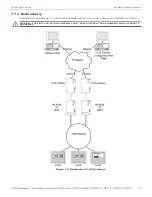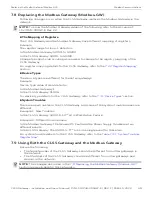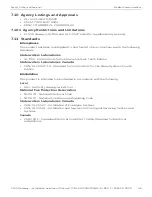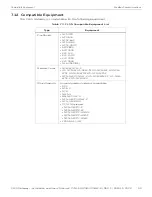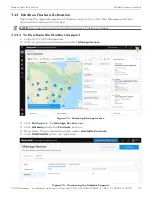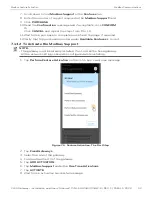
CLSS Gateway - Installation and Users’ Manual | P/N:LS10248-000HW-E | REV. F | FEB/11/2022
61
Register Mapping
Modbus Communications
Result:
The CLSS Gateway sends back zeros in response to the first request for analog
values from the points L1M1 through L1M10. The CLSS Gateway sends back actual
values in response to the second request from the client 10 seconds later. The CLSS
Gateway continues to poll these devices as long as the client continues to send analog
value requests for the points L1M1 through L1M10. When the client sends a request for
analog values from the points L1M5 through L1M12, the gateway immediately sends
back zeros in response to the first analog value request from points L1M11 and L1M12
(since these are newly requested points) and it sends back actual values in response to
the continuing analog value requests for points L1M5 through L1M10 (since it already
has been polling these points). The gateway stops polling points L1M1 through L1M4
and starts polling points L1M5 through L1M12.
Use Case 5:
A client requests analog values from the points L1M1 through L1M15.
Result:
The CLSS Gateway sends back an exception response because it can only
process requests for up to 10 analog values at a time. The client should request and
receive values for L1M1 through L1M10 and then send a request for L1M11 through
L1M15. Note that the first request for analog values from a valid range of points is
considered an initialization request, which returns zeros.
7.22 Register Mapping
7.22.1 Register Mapping Overview
The CLSS Gateway uses 16-bit registers. One Modbus Input register and one Modbus
Holding Register are allocated for each device address. These registers represent a
contiguous address mapping of all devices and points.
7.22.2 Point Status Holding Registers
Each of the point status holding registers are divided into an upper and lower byte as
described below and in
Table 7.9, “Point Status Holding Register Bit Definitions”
.
•
Upper Byte
: The upper byte contains general status information about the point.
•
Lower Byte:
The lower byte is primarily used when bit 11 in the upper byte is a ‘1’ (or
active). When bit 11 is a ‘1’,
See “CLSS Gateway Active Event Code” on page 74.
for detailed
information about the active point. The lower byte will be all 0’s if the device is not in an
active state.
Specifically, the lower byte contains the actual active event for this point. An active state
is defined in this gateway as any Fire, Security, Critical Process, Medical, Mass
Notification, or Supervisory alarm state.
If the point is not present in the panel programming, all bits in the lower byte will contain
a ‘1’ or the value FFH, but the upper byte will contain a ‘0’.
NOTE:
You can reserve 300 registers for device type registers.

